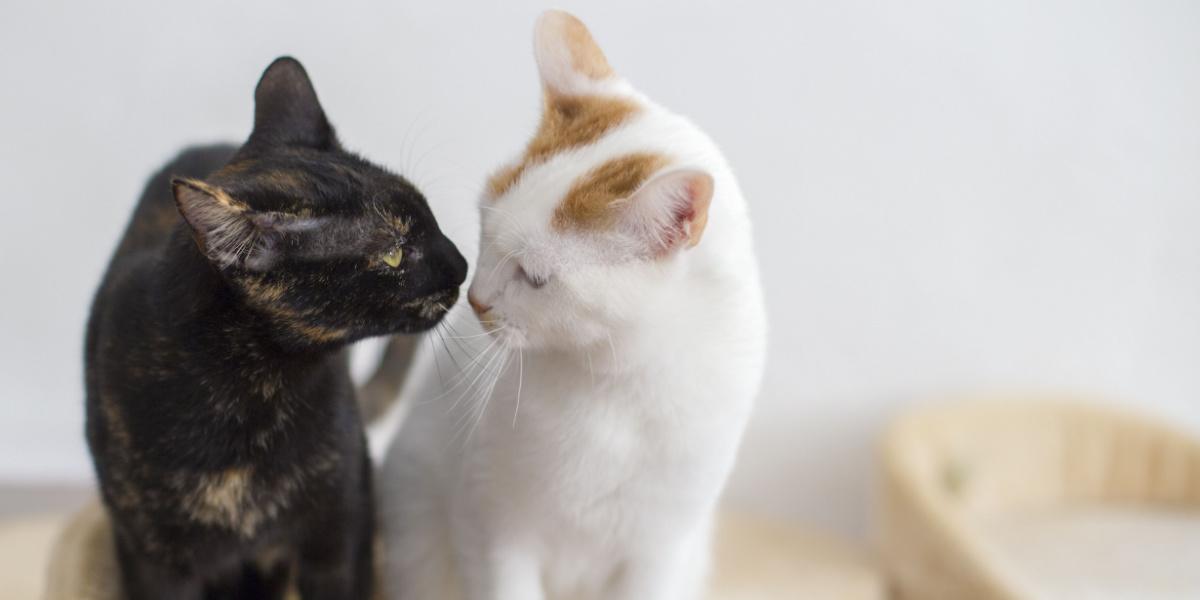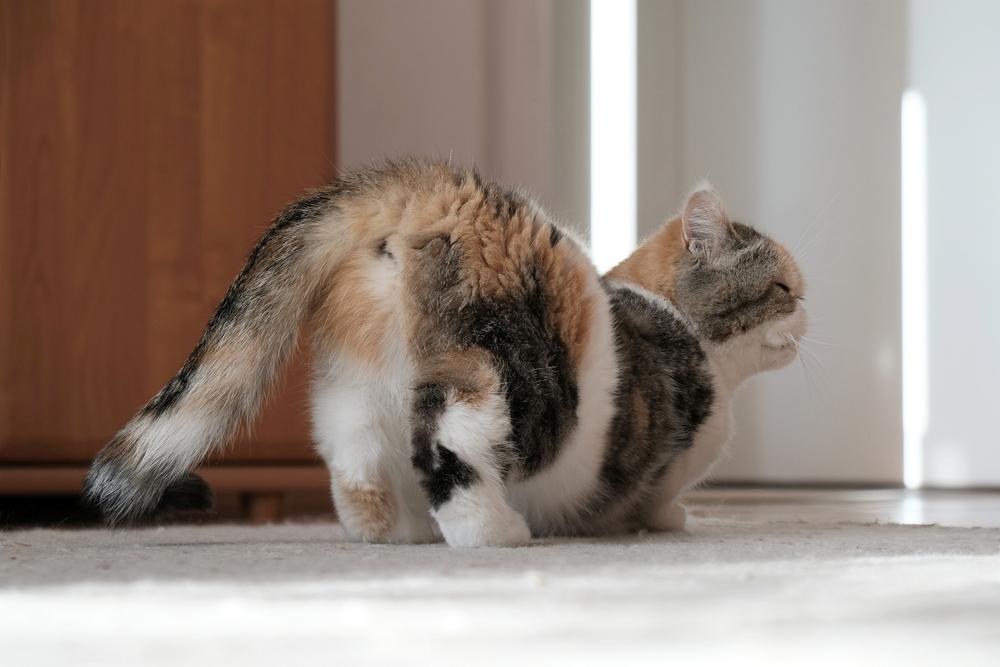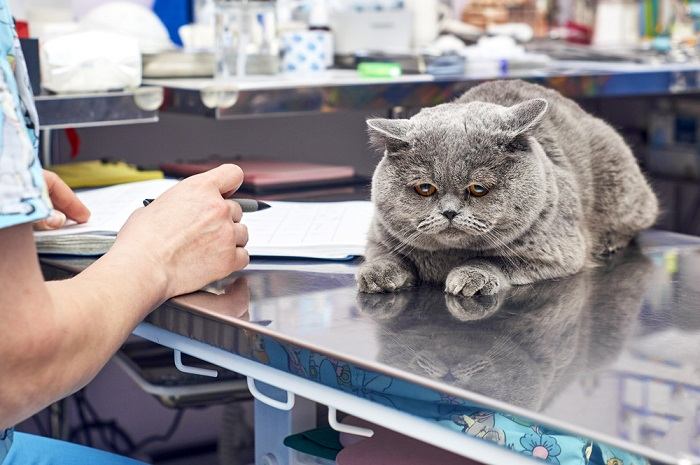
So you’ve brought home your newest feline additions to the family, and they are growing fast, but perhaps you haven’t thought through what happens when your male and female cats get a bit older. Is it likely that they will mate, and if so, when?
Cats can come into heat repeatedly during mating season and sometimes all year round. Usually, female cats do not let males mate with them when they are not in heat. It is not always obvious when your cat is in heat; sometimes, there are no signs at all - this is known as ‘silent heat.’Key Takeaways
What about when she is not in heat? Usually, a female cat won’t be receptive to being mated unless she’s in estrus. However, there are always exceptions! In this article, we discuss all about feline estrus, when a female cat might be exposed to the advances of entire male cats, and some of the issues that result from your cat mating with others.
Cats Grow Up so Fast!
Male and female kittens can reach sexual maturity as young as four months of age – much younger than most people realize. Of course, they are still very small at that age, and getting pregnant could have serious consequences for your beloved kitty and any unborn kittens.
When a female cat is in heat, she is in the fertile phase of her estrus cycle. The whole cycle lasts around 2-3 weeks, being in heat for roughly 4-10 days of this. Cats are seasonal breeders, and have multiple estrus cycles (polyestrus) during their active season. Typically in the US, a cat’s breeding season is in the spring and summer months (often February to September/October). This mating season has evolved to ensure that the kittens are born in the warmest months of the year when food is readily available.
Most cats will have 2-4 oestrus cycles a year with a varied dormant period in between. Cat gestation is approximately 63 days, so if they get pregnant, they might have multiple litters in one season.
Physically, your cat is not strong enough to have kittens until she reaches full maturity and has stopped growing. Therefore, it is not recommended that she mates younger than two years old and following a thorough check over from your veterinarian. Breeding from queens at a younger age can affect their growth and health status and put them at risk during birth. So, being a responsible pet parent and protecting your female cat from a very early age is incredibly important.
Watch Out for the Signs of Estrus

When in heat, female cats may assume the mating position, or ‘lordosis’, with back end elevated and tail held to one side.
When an intact male cat is at sexual maturity, his testosterone levels increase and you may notice a change in his behavior. He might start meowing loudly, pacing, or roaming much further from home. He may become more territorial and aggressive to other cats in the neighborhood, getting into scraps more often. This is usually triggered by the nearby presence of a female cat in heat.
Similarly, when a female cat reaches sexual maturity, there can be some clear cues that she is coming into heat. Female cats often become overly affectionate and may take to rubbing their scent all over you or the soft furnishings. Cats in estrus may roll around on the floor a lot and assume odd positions. She might stand with her front quarters low and her tail raised in the air swishing it from side to side.
Some female cats will yowl as if they are in pain, and this can be very alarming for their pet parents but don’t worry – this is completely normal behavior! Other changes you might notice include lethargy, restlessness, decreased appetite, and a bloody discharge from her vulva, just under her tail – she might even over-groom in this area.
Both male and female unneutered cats may take to urine marking around the home during mating season. Marking enables them to communicate with other cats and to mark their territory. Of course, there can be other causes of urine spraying in female cats, and this is a more prevalent issue in multicat households. Estrus symptoms can be vague and confusing, so always contact your vet clinic for advice if you are unsure.
Don’t Get Caught Out by a Silent Heat!
Silent heat occurs when your cat is ready to ovulate and release an egg but shows no obvious physical or behavioral signals that pet parents usually recognize. When this happens, they are receptive to male cats mating with them, and they can potentially become pregnant.
Silent heat is more common in shyer cats, those having their first estrus, or due to stress or overcrowded housing. Breeders can discuss testing for silent heat (swabbing the cells in the lining of the vagina) with their veterinarian. However, this can be a pitfall for the average pet parent when trying to avoid unwanted pregnancies.
While your cat is in silent heat, she might respond to you scratching her lower back by lifting her rear end into the air, which might be a clue. Other cats in the household might start taking an interest in her, and their behavior might change in response to the pheromones she is releasing. Remember, just because your cat is not showing signs of being in heat doesn’t necessarily mean she is not fertile and willing to mate.
Male Cats Know When Females Are in Heat
Cats have a very advanced sense of smell. Not only that, their special vomeronasal organ is specially designed to detect cat-related pheromones (or special feline hormones). These scents are excreted by special glands on your cat’s face and in their urine.
They act as biochemical messages, telling your male cat the age, sex, and heat status of any female cats around him. This way, tom cats will actively seek out female cats that they sense are in heat – in their eyes, the perfect mate!
What Happens if Your Female Cat Is Not in Heat
The short answer is no: if your cat is not in heat, then it is unlikely that she will stand for a male and allow him to mate with her. Generally, as a rule, cats only mate when the female is in estrus. There will, of course, be some exceptions to the rule. Male cats may be interested in your cat in the short period of 1-3 days before estrus, known as proestrus.
If this is the case, she will likely reject him. But some tom cats may not be inclined to take no for an answer, which might end in conflict and a potential mating. In fact, some female cats will reject male cats even when they are in estrus – she may just not be in the mood to mate, so her reaction to the male cat does not always tell you when she is actually in heat.
Also, don’t forget that cats can come into heat all year round. So if your cat is around a male cat that is interested in her, this may stimulate her to come into heat, leading to an unexpected mating. Exposing any female cat to unneutered males within the household, or letting her out before neutering, makes pregnancy very likely.
Consider Neutering Your Cat

Neutering your is a responsible action to prevent unwanted pregnancies, as well as reducing the chances of some illness and disease.
With many shelters bursting at the seams with unwanted kitties and feral cat populations booming in some regions, you can see why many veterinarians and charities recommend early neutering of male and female cats.
But in addition to preventing unwanted litters of kittens, neutering has many other advantages, including reducing the spread of viral diseases, reducing territorial behaviors such as roaming and fighting between unneutered males, decreasing male-to-female aggression during mating, and removing the risk of uterine infections and mammary cancer to name but a few.
While the pros and cons of neutering your cat are beyond the scope of this article, keeping kittens indoors before neutering is a must. Looking after a cat with kittens is a lot of work; most people want to avoid this. Whether you let your cat outdoors after that depends on local regulations and personal choice. However, the risks this poses to your cat must be carefully considered first.
Also Read: How Much Does It Cost To Spay Or Neuter A Cat?
Conclusion
Female cats will generally only be mated when they are in the active part of their estrus cycle: when they are ‘in heat’. However, exceptions such as silent heats or proestrus matings are more common than you think, and relying on noticing the overt signs of estrus before separating a male from a female cat to prevent pregnancy is not reliable.
Neutering your cat is by far the easiest way to reduce numerous common risks associated with mating and interacting with other entire cats. But if you intend to breed from your queen, this should be well-planned and researched with the right veterinary monitoring and care. An accidental pregnancy due to a chance encounter with a stray tom cat down the road is absolutely not advised and may have serious consequences for your precious cat.
If you are unsure about neutering or are concerned about your cat’s behavior or any symptoms she is showing, seek advice from your local veterinarian, as they will have you and your cat’s best interests at heart.
Related Conditions:
- Cat Uterus Infection (Pyometra): Causes, Symptoms, & Treatment
- Urinary Tract Infection In Cats
- Cat Bite Infection: Causes, Symptoms & Treatment
- Feline Immunodeficiency Virus (FIV): Symptoms, Causes, Diagnosis & Treatment
- Dystocia In Cats: Clinical Signs & Treatment
Frequently Asked Questions
Do cats get pregnant when not in heat?
No, it is unlikely for your cat to get pregnant when she is not in heat. Queens come into heat when a follicle matures in the ovary, ready to be released as an egg. Release of this egg into the uterus (ovulation) will only occur after mating. If the egg is not successfully fertilized, your cat might experience a pseudopregnancy where she shows many of the symptoms of gestation (milk from nipples, altered behavior, weight gain, etc.) without actually being pregnant.
What can I do if my female cat comes into heat?
Firstly, separate her from any entire male cats and keep her strictly indoors. Monitor her for signs of concern, and speak to your veterinarian if you are worried. Provide her with safe spaces such as igloos and beds inside cardboard boxes, or move them to their own room if she seems stressed by people or other cats. If she seems agitated, provide plenty of stimulation through toys and games to help take her mind off her mating drive. Pheromone sprays may also be useful in the home. Speak to your vet about the most appropriate time to neuter your cat once her season has ended.
How can I tell when my female cat has just mated?
In all honesty, it is sometimes impossible to tell immediately. In some cases, signs of being in heat abruptly stop, which can be an indication. If the mating is successful and the pregnancy progresses, your cat will gain weight, have an increased appetite, and have swollen nipples. Some cats develop gastrointestinal signs, such as vomiting and diarrhea early in pregnancy. If the mating does not lead to pregnancy, your cat may experience a pseudopregnancy with similar signs or return to her usual estrus cycle.
-
Little, S.E., (2012) Female Reproduction. The Cat 1195–227
-
https://www.cats.org.uk/media/1029/eg18_pregnant_cats-_birth_and_care_of_young_kittens.pdf







